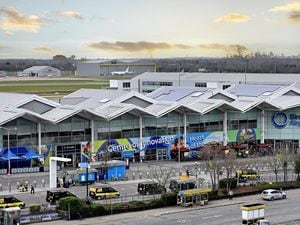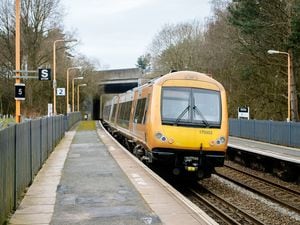Three councils team up for HS2 petition
Three councils are joining forces to petition the House of Lords as part of their fight against a HS2 railhead being built near Stone.

This week Stone Town Council, Chebsey Parish Council and Yarnfield and Cold Meece Parish Council all agreed to petition the House of Lords High Speed Rail (West Midlands – Crewe) Bill Select Committee on behalf of their residents for changes to the High Speed Rail (West Midlands – Crewe) Bill.
The HS2 line between Fradley and Crewe is proposed to pass through Stafford Borough, with a railhead and infrastructure maintenance base (IMB-R) earmarked for land to the west of Stone, near Yarnfield.
But residents are concerned about the impact on the area’s roads of thousands of extra lorry movements per day during the construction process.
The petition put forward by the three councils said: “The proposal is objectionable on engineering, environmental and economic grounds and its construction would have seriously detrimental effects on the people of these communities, together with the wider population who travel to and through this part of North Staffordshire.
“HS2 Ltd’s construction plans will also have a seriously detrimental impact on the operational safety of the M6 via its proposed access/egress arrangements on Yarnfield Lane. This will increase the already substantial impacts on the alternative routes (notably the A500 and A34) associated with the closure of the motorway between Junctions 14 and 15.
“This situation threatens to be compounded by HS2 Ltd’s proposed HGV traffic requirements passing through the M6 J15 Hanchurch Interchange, which will not be effectively mitigated by its proposals at this location. These changes will place the residents of Newcastle Road, Hanchurch, and potentially public road users at considerable additional safety risk.
“From a railway engineering perspective, the construction of the Stone Railhead, and particularly the operation of the subsequent Infrastructure Maintenance Base – Rail (IMB-R), will result in seriously detrimental effects on the operation of the Norton Bridge to Stone Railway, which is currently used by six passenger services per hour.”
The councils have renewed their calls for the proposed railhead to be relocated to an alternative site. Stone Railhead Crisis Group has previously presented the case to a House of Commons select committee on behalf of local councils, but their proposal was rejected last year.
The committee’s report, published in May 2018, said: “We were impressed by the detailed research conducted by the petitioners who proposed siting the railhead at Aldersey’s Rough.
“Aldersey’s Rough is located close to Stone, and is a rural non-residential area. However, the amount of additional work that the proposal would require in order to make it a viable solution would be too costly and too disruptive and the committee was not convinced as to its proposed merits.”
The latest petition from the three councils said however: “The only way to effectively mitigate the catastrophic environmental and economic effects on the road network in the vicinity of the Stone Railhead/IMB-R and Hanchurch interchange is to relocate the proposed Phase 2a Railhead/IMB-R to Aldersey’s Rough, near M6 Keele Services in Staffordshire.
“The ‘offline’ location of Aldersey’s Rough, with the associated ability to construct each element without conflict from other construction elements, would also make it much easier and cheaper to build than Stone, thereby saving £10s of millions to the public purse.
“This proposal would also greatly mitigate the severe impacts that the Stone IMB-R will have on the Norton Bridge to Stone Railway and the classic railway network once Phase 2 of HS2 becomes operational.
“It would also provide a catalyst for reopening a currently disused railway line that has the potential to significantly increase rail connectivity and capacity in North Staffordshire, with the resultant social and economic benefits to the region.”





